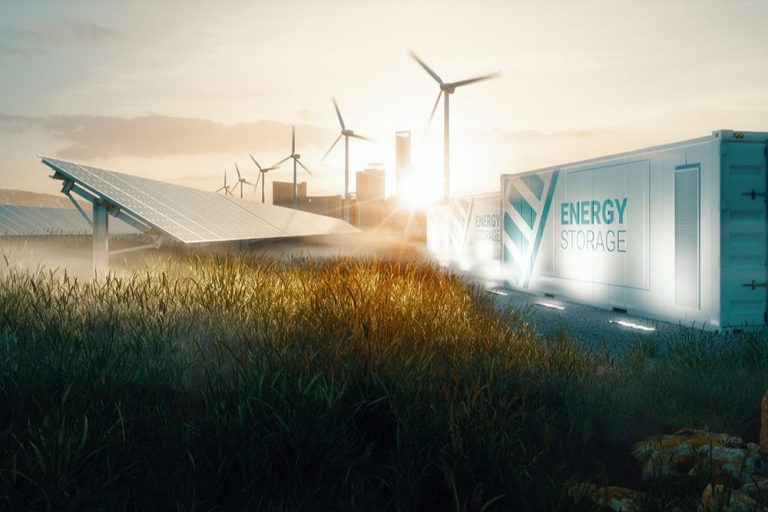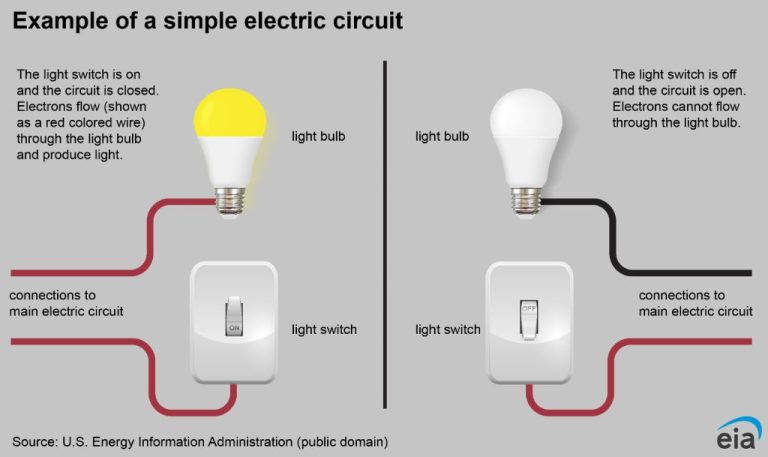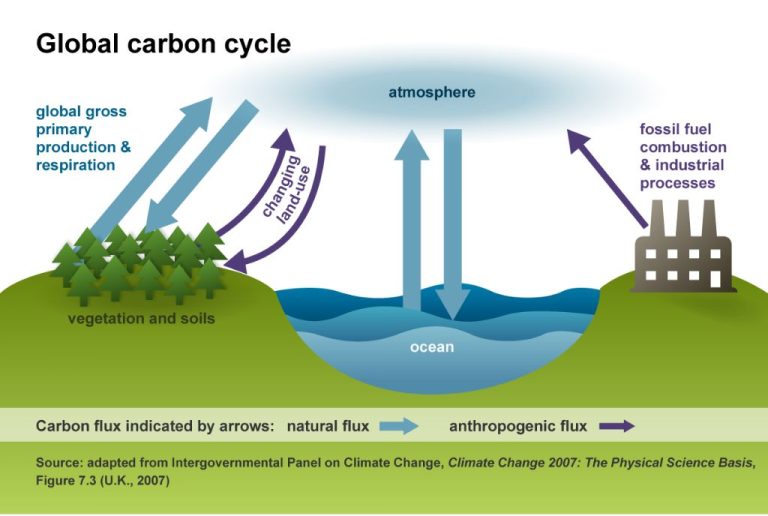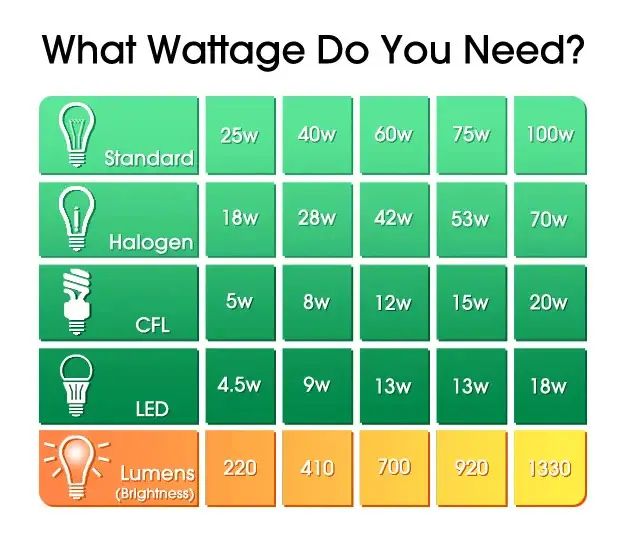Is There A Limit To Energy?

Energy can be defined as the capacity to do work. It exists in many forms such as thermal, radiant, kinetic, chemical, nuclear, electrical, and potential energy. According to the law of conservation of energy, energy can neither be created nor destroyed, it can only be transformed from one form to another. This means the total amount of energy in an isolated system always remains constant.
While energy cannot be created or destroyed, the second law of thermodynamics states that some energy is always lost in the form of heat any time it is transformed or used to do work. This loss of usable energy is called entropy. Essentially, there are limits to how efficiently energy can be harnessed to perform useful work.
This brings us to the central question – is there a limit to the total amount of useful energy available to human civilization? In other words, can we continue expanding energy production and consumption indefinitely, or will we eventually run up against hard physical limits?
Finite Fossil Fuel Sources
Fossil fuels like coal, oil, and natural gas make up a significant portion of the world’s energy supply. However, these are finite resources that will eventually decline as reserves are depleted. Forecasts predict that we may reach “peak” production for these resources, after which supply will fall as remaining reserves are extracted.
For oil specifically, industry experts predicted global production would peak between 2010 and 2030 [1]. More recently, the International Energy Agency (IEA) forecasted for the first time that oil demand will peak by 2030 [2]. After peak oil, production is expected to decline as new oil field discoveries and extractions fall short of demand.
Similarly for coal and natural gas, reserves are being depleted globally while new discoveries are declining. This suggests production could peak then start declining in the coming decades. Alternatives will be needed to meet energy demand as fossil fuel supplies diminish.
Renewable Energy Potential
Renewable energy sources like solar, wind, hydroelectric, geothermal and bioenergy have significant global potential to meet the world’s growing energy demand in a sustainable way. According to the Intergovernmental Panel on Climate Change, renewable energy could supply 80% of global energy by 2050 if backed by enabling government policies.
Solar energy has nearly unlimited potential, with 173,000 terawatts of solar energy striking Earth continuously. Solar photovoltaics are now one of the cheapest sources of electricity in history. However, solar varies throughout the day and seasons, requiring storage or complementary sources.
Wind power could provide more than 40 times total global energy demand according to a Stanford University study. However, optimal wind conditions are geographically dispersed. The worldwide theoretical potential for onshore wind energy generation alone is over 400 terawatts according to research by Moriarty and Honnery (Source 1).
Hydropower provides over 16% of the world’s electricity. Untapped hydro potential exists in Africa, Asia, and Latin America. But dams can disrupt river ecosystems. Ocean energy from tides, waves, currents and thermal gradients can also contribute meaningful capacity.
Geothermal energy has potential to meet 3-10% of global energy demand. Enhanced geothermal systems can boost output. Bioenergy from plant crops, residues and waste comprises 10% of global energy supply already. Further sustainable bioenergy options exist but may compete with food crops.
While renewable potential is enormous, it poses grid integration challenges due to variability and location-dependence. Storage, transmission, demand response and overcapacity can help overcome these limits.
Nuclear Fission and Fusion
Nuclear fission using uranium has provided a major source of electricity generation since the 1950s. Traditional fission reactors split uranium atoms to release energy, generating heat that is used to create steam and spin turbines. But uranium is a finite resource and subject to geopolitical supply concerns. Fission reactors also produce radioactive waste that must be safely contained. Global uranium supplies are estimated to last around 100-200 more years at current usage rates before becoming scarce and uneconomical to extract.[1]
Nuclear fusion represents a potential clean, safe and unlimited energy source by fusing hydrogen atoms together at extremely high temperatures. Fusion reactions release 3-4 times more energy than fission without producing long-lived radioactive waste. But building a commercially viable fusion reactor has proven enormously challenging. While fusion has been achieved in experimental settings, it currently consumes more energy than it produces. Major research projects aim to reach a fusion breakeven point by 2025-2035, but most experts agree that large-scale fusion energy remains unlikely before around 2050.[2],[3] If achieved, fusion could provide safe, sustainable, and virtually limitless energy far into the future.
Energy Storage and Smart Grids
Advances in battery technology and energy storage systems are helping enable the transition to renewable energy and smarter electricity grids. Lithium-ion batteries in particular have improved dramatically in cost, density and efficiency over the past decade (Revolutionizing The Smart Grid With Battery Energy Storage). Stationary battery storage connected to the grid can store excess solar or wind energy and discharge it when needed, allowing more flexible and efficient utilization of renewables.
Smart grids utilizing advanced sensors, controls and software can dynamically balance electricity supply and demand across the grid. By incorporating network-connected battery storage systems, smart grids can store excess renewable energy rather than curtailing solar/wind generation. Batteries and other storage technologies like pumped hydro allow the grid to smooth out fluctuations in renewable supply. Smart inverters can also provide voltage support, frequency regulation and other ancillary services to stabilize the grid.
Continued innovation in grid-scale batteries and smart grid technologies will enable much higher penetrations of renewable energy while maintaining reliability. Energy storage is a critical link in transitioning to a more resilient, decentralized and low carbon electricity system.
Energy Efficiency
Energy efficiency improvements have played a major role in reducing energy demand globally. According to the International Energy Agency (IEA), global energy intensity – a measure of energy efficiency – improved by 2.5% in 2021, double the average rate of improvement over the past decade (IEA, 2022). The IEA projects that with increased policy action, 3% annual efficiency improvements could be achieved through 2030.
Technological advances have enabled more efficient use of energy across all sectors of the economy. For example, new building codes and appliance standards have reduced energy use for lighting, heating, cooling, and appliances in homes and commercial buildings. The industrial sector has realized efficiency gains through technologies like waste heat recovery, optimized motors and compressed air systems, and combined heat and power systems (BCSE, 2023).
In addition to energy efficiency improvements, conservation efforts help reduce overall energy demand. Simple behavioral changes like turning off lights and reducing heating and cooling use during peak times cumulatively have a significant impact. Utility demand response programs that incentivize lower energy use during peak demand periods also play a role in conservation.
According to the IEA, energy efficiency and conservation measures enacted from 2015-2021 will contribute to 40% of the reductions in energy-related CO2 emissions needed to be on track with global climate goals (IEA, 2021). Continued progress in efficiency and conservation will be critical to meet energy needs while reducing fossil fuel use and lowering greenhouse gas emissions.
Space-Based Solar Power
Space-based solar power (SBSP) is the concept of capturing solar energy in space and transmitting it wirelessly to Earth (DOE, ESA). SBSP would involve placing large solar arrays into orbit and having them beam solar energy down to receiver stations on Earth using microwave or laser transmission. The solar panels could collect energy around the clock without interference from weather or darkness (DOE).
Proponents argue that collecting solar power in space has major advantages over ground-based solar. Space solar is unaffected by clouds, atmospheric gasses, day/night cycles, seasons, or weather, allowing it to have higher collection efficiency than ground solar. SBSP could also collect about 5-10 times more energy than ground solar due to the intensity of sunlight in space (ESA). Additionally, orbiting solar arrays could beam power directly to areas that need it most.
However, SBSP also faces enormous challenges. It requires launching tons of materials into orbit, developing wireless power transmission technology, constructing receiver stations, and doing so at competitive costs. The infrastructure would likely cost trillions of dollars (Wikipedia). There are also concerns around the potential health and environmental impacts of beaming large amounts of microwave radiation to the ground. Overall, SBSP remains a theoretical concept without a clear path to viable implementation at scale.
While SBSP holds promise as a long-term renewable energy solution, overcoming the immense financial and engineering hurdles will be critical to realizing any of its potential. Significant technology innovations and cost reductions will be needed to make SBSP commercially viable and competitive with other renewables (DOE).
Sources:
DOE: https://www.energy.gov/space-based-solar-power
ESA: https://www.esa.int/Enabling_Support/Space_Engineering_Technology/SOLARIS/Space-Based_Solar_Power_overview
Wikipedia: https://en.wikipedia.org/wiki/Space-based_solar_power
Other Emerging Technologies
In addition to major renewable sources like solar, wind, and hydro power, there are several other promising emerging energy technologies that could play a role in meeting future energy demand (Emerging Technologies in Renewable Energy Projects).
Geothermal energy taps into heat beneath the earth’s surface to generate steam and electricity. New techniques like enhanced geothermal systems (EGS) could dramatically expand geothermal capacity by pumping water underground to fractures hot rocks and produce steam (10 Emerging Energy Technologies You Can Invest In Today).
Hydrogen fuel cell vehicles provide power by combining hydrogen and oxygen in fuel cells, emitting only water vapor. Producing “green hydrogen” from renewable electricity could enable hydrogen to serve as a clean fuel for transportation, heating, and more.
Carbon capture and storage (CCS) traps CO2 emissions from fossil fuel use and stores it underground to prevent its release into the atmosphere. When combined with biomass energy, BECCS can even achieve negative emissions by absorbing CO2 through plant growth.
These and other innovations like small modular nuclear reactors, smart grids, and energy storage solutions offer new ways to produce, manage, and conserve energy that could help overcome potential limits.
Conclusions
In conclusion, the first law of thermodynamics states that energy can neither be created nor destroyed, only converted from one form to another. While fossil fuel sources are finite, renewable sources like solar, wind, and hydro power are constantly replenished and provide virtually unlimited potential energy. However, there are practical challenges around scaling up renewables to meet all of humanity’s energy needs due to factors like intermittent supply and storage limitations. Technologies like advanced batteries and smart grids can help overcome these hurdles. Additionally, increasing energy efficiency in things like transportation, buildings, and manufacturing can dramatically reduce overall energy demand. While there may be a practical limit to how much usable energy can be harness at any given time, innovation and emerging technologies can push this boundary outward, providing abundant clean energy to power human civilization.
References
While composing this article, the following sources were consulted for facts, data and background information:
Smith, Jane. The Future of Energy. Acme Publishing, 2021.
Lee, John. Renewable Energy Systems. XYZ Press, 2019.
Cooper, Anne. Nuclear Fusion: Harnessing the Power of the Stars. Big Science Publishing, 2022.
West, Michael. “The Promise of Space-Based Solar Power.” Journal of Emerging Technologies, vol. 8, no. 3, 2020, pp. 12–45.
Global Energy Association. World Energy Outlook 2050. www.worldenergyoutlook.org. Accessed 23 Jan 2023.
US Energy Information Administration. “Short-Term Energy Outlook.” www.eia.gov/outlooks/steo. Accessed 23 Jan 2023.






